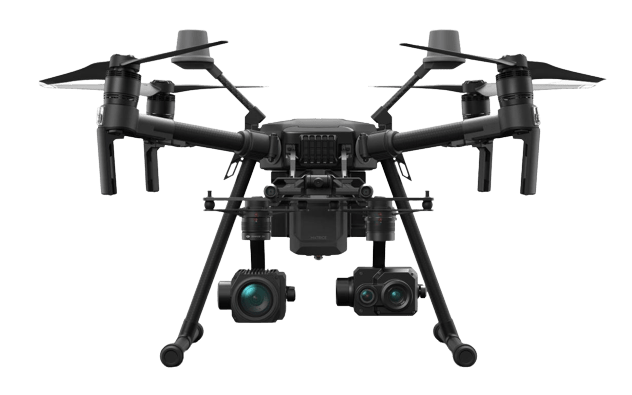Renewable Energy
In India in particular, the global energy shift towards renewable energy, particularly solar and wind energy, is increasing speed. Drones and other cutting-edge technology have showed great potential.
As we’ve shown, drones can help securely supply clean energy to mankind while maximising energy output by doing routine preventative checks.
Sector-Specific use of Drones
Solar Energy
Drones are changing India's energy landscape by enhancing the life cycle of solar facilities to improve operational efficiency.
Although installing a solar panel system may appear simple, businesses must make sure that their installation process adheres to the correct procedures in order to obtain a high Return on Investment (ROI) and satisfied outcomes. The system’s effectiveness is affected by a number of variables, including the solar panel’s exposure, the surface it is put on, maintenance, and site shadowing. It is essential to assess the state of the site. It could involve a great deal of trial-and-error, transferring a whole design team from one location to another, and going over budget. India also requires a lot of energy resources to support its expanding population, necessitating practical solutions like solar photovoltaic (PV) technology that can scale up quickly. Given the labour hours needed to build, maintain, and repair the PV infrastructure, installing enough solar capacity will be a difficult task.
Reduces safety concerns while completing the task swiftly.
The amount of energy contained in the planet’s reserves of coal, oil, and natural gas would be matched if we could harness the sun’s energy for just 18 days. Even though we can only capture a minuscule fraction of this energy, capturing solar energy has a significant positive impact on the earth.
Sector-Specific use of Drones
Wind Energy
To evaluate a turbine's operation, damage, and methods to boost performance, operators can fly anywhere in one place.
In 2025, electricity produced from renewable sources will surpass coal production. Owners of wind farms must make sure their wind turbines are kept at maximum efficiency and extend the life of their three-bladed assets to optimise return on investment.
The elements that are continually present on turbine parts include hail, snow, lightning, rain, salt, and dust. Other factors, such as excessive load buckling or production flaws that result in blade de-bonding, can also harm turbine blades.
Drones are being used more often to inspect wind turbines for damage and flaws as wind energy usage rises. Early inspection and analysis are crucial since turbine repairs can cost up to $30,000 per turbine annually and result in lost income from days of idleness because of damage.
Inspections of wind turbines are benefiting greatly from drone technology.
One of the most rapidly expanding renewable technologies is wind energy. The use of wind power is expanding globally as costs come down. According to IRENA, capacity has expanded from 7.5 gigawatts (GW) in 1997 to 564 GW in 2018, an increase of approximately 75 times.
Sector-Specific use of Drones
Nuclear Energy
Inspectors can use thermal capabilities to find possible flaws or structural strains that aren't obvious to the human eye.
However, nuclear power plants present special challenges for keeping employees healthy and safe. Workers are sometimes required to enter high-dose areas to ensure the safety of the plant. Taking the risk to life out of these necessary activities is one way to make the plants safer places to be. Drones are one such solution being used to inspect hazardous rooms, monitor the condition of radiation-waste tanks, and read meters in high-dose areas.
The safety of nuclear power facilities is strictly controlled. Accidents that result in leaks might have serious repercussions, hence rigorous inspection procedures are essential. These inspections, however, often involve just a person wearing a radiation suit and a flashlight and are time-consuming, expensive, and dangerous.
Drones can rapidly and safely enter regions that are difficult to access and may be dangerous.
Contrary to popular belief, nuclear power plants provide carbon-free electricity. The most trustworthy kind of energy production is nuclear. Nuclear energy generation prevents 528 million metric tonnes of CO2 from being discharged into the environment each year, according to the Nuclear Energy Institute (NEI).
Benefits of Drone
Inspection of Wind Turbines using drones
- Wind turbine inspections with the unique capability to examine up to 15cm inside the blade via thermal payload
- Capability to examine other parts of the structure using unique thermal and optical payloads
- Full reporting structure
- Predictive modelling for failures and issues
Inspection of Solar Panel arrays using drone-based technology.
- Thermal analysis of PV arrays to show damaged arrays and individual issues
- Airborne electroluminescence (EL) testing currently in development
- Report making
- Data storage
- Expert analysis
- Minimal downtime of less than 45 minutes per turbine
- Quick data processing with strong back-end AI
- Reduction in operation costs
- Proactively maintain and increase revenue with longer uptime with predictive maintenance activities.
- Scan large areas in short time
- Inspection completed under normal operation, reducing downtime costs
- Drones can cut up to 50% from inspection costs compared to traditional techniques
- Regular inspections resolve issues while under warranty
Package Dimensions
(790×390×290mm)
Dimensions (unfolded)
(887×880×378 mm)
Dimensions (folded)
(716×220×236 mm)
Folding Method
Folded Inward
Diagonal Wheelbase
25.3 inch (643 mm)
Number of Batteries
2
Weight
(with two standard batteries )
Max Takeoff Weight
6.14KG
Max Payload
Approx.2.3kg and 1.57kg (with two standard batteries )

